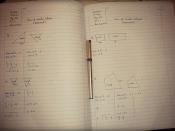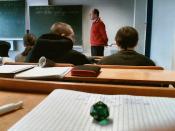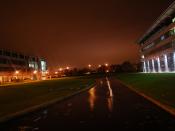Dyscalculia (or dyscalcula)
"Dyscalculia" is a lesser-known learning disability that affects mathatical calculations. It is derived from the generic name "mathematics difficulty."
There are rigorous criteria used to determine if a student has a learning disability as it is defined by special education criteria. When a student's mathematics difficulties are severe enough to meet certain criteria, special education services are indicated. However, "dyscalculia" has no clearly defined criteria and cannot be assessed reliably. Inasmuch, a student with any degree of mathematics difficulty may be considered to have "dyscalculia" by some educational specialists.
Because of the ambiguity of categorization, being identified as having "dyscalculia" may or may not indicate the need for special education services. The term appears to be seldom used within public schools because of the lack of any clear, measurable criteria. Nevertheless, many students have it.
Underlying Causes
Dyscalculia has several underlying causes. One of the most prominent is a weakness in visual processing.
To be successful in mathematics, one needs to be able to visualize numbers and mathematics situations. Students with dyscalculia have a very difficult time visualizing numbers and often mentally mix up the numbers, resulting in what appear to be "stupid mistakes."
Another problem is with sequencing. Students who have difficulty sequencing or organizing detailed information often have difficulty remembering specific facts and formulas for completing their mathematical calculations.
Symptoms
Many students with disabilities have histories of academic failure that contribute to the development of learned helplessness in mathematics. It is important that mathematics instructors recognize the symptoms of dyscalculia and take the necessary measures to help students that are affected.
*Students might have spatial problems and difficulty aligning numbers into proper columns.
*Have trouble with sequence, including left/right orientation. They will read numbers out of sequence and sometimes do operations backwards. They also...



I might have it
I think I may have the disorder. I fit the bill for much of the symptoms.
2 out of 2 people found this comment useful.